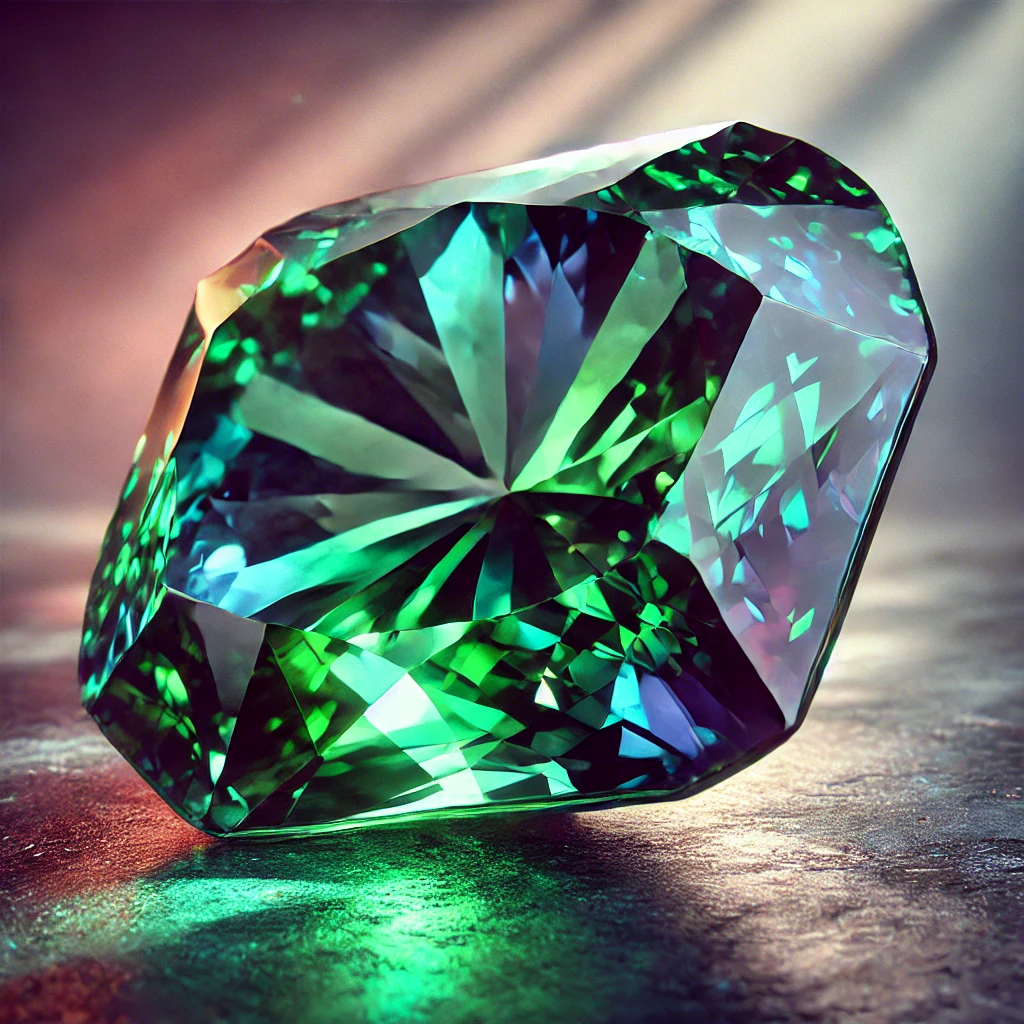Alexandrite: Stone of Transformation & Good Fortune
Overview and Meaning
Alexandrite is a rare and highly valuable variety of chrysoberyl known for its remarkable color-changing properties. It shifts from green or bluish-green in daylight to reddish-purple under incandescent light, symbolizing balance, transformation, and prosperity. This unique optical phenomenon, known as pleochroism, makes Alexandrite one of the most sought-after and mystical gemstones.
As a stone of good fortune, intuition, and personal growth, Alexandrite is believed to help align the mind, body, and spirit, fostering clarity, adaptability, and abundance in life.
1. History and Mythology
- Alexandrite was discovered in 1834 in Russia’s Ural Mountains and named after Czar Alexander II, as it displayed the red and green colors of Imperial Russia’s military.
- Russian mystics considered Alexandrite a “stone of destiny,” bringing luck, wisdom, and alignment with one’s higher purpose.
- The gemstone is associated with royalty and elite circles, historically being worn as a symbol of intelligence and prosperity.
- In esoteric traditions, Alexandrite is linked to the heart and third eye, enhancing emotional resilience and spiritual insight.
- Alexandrite is one of the rarest birthstones and is associated with June, alongside Pearl and Moonstone.
2. Healing and Metaphysical Properties




Alexandrite is often used in energy healing, meditation, and spiritual practices to enhance alignment with one’s life purpose.
3. Variations and Colors
The most unique feature of Alexandrite is its color-changing effect:
- In daylight or fluorescent light: Appears green, bluish-green, or teal.
- Under incandescent or candlelight: Shifts to reddish-purple, magenta, or deep burgundy.
The most valuable Alexandrite stones display a dramatic color shift with intense saturation and clarity.
4. Uses and Jewelry
- Due to its exceptional rarity, Alexandrite is often found in high-end jewelry, including rings, pendants, and earrings.
- It is commonly used in meditation and manifestation practices to enhance spiritual awareness and abundance.
- Alexandrite is considered a symbol of luck and longevity, making it a popular anniversary gift, especially for the 55th wedding anniversary.
5. Care and Maintenance of Alexandrite
5.1 How to Cleanse and Charge Alexandrite
- Water Cleansing: Alexandrite can be rinsed under lukewarm water, but avoid prolonged exposure.
- Sunlight Charging: It is best charged in indirect sunlight, as intense light can affect its color over time.
- Moonlight Charging: Leaving it under a full moon helps cleanse and rejuvenate its energy.
- Smudging: Use sage, palo santo, or incense smoke to clear any accumulated negativity.
- Selenite or Quartz Charging: Placing Alexandrite near Selenite or Clear Quartz amplifies its properties.
5.2 Storing and Handling
- Alexandrite has a Mohs hardness of 8.5, making it durable but still susceptible to scratches from harder gemstones like Diamonds.
- Store Alexandrite separately from other gems to prevent surface damage.
- Avoid exposure to harsh chemicals and ultrasonic cleaners, as they can alter the stone’s structure.
Conclusion
Alexandrite is a rare and extraordinary gemstone, offering transformation, prosperity, and heightened intuition. Whether worn for its beauty, mystical properties, or as a personal talisman, Alexandrite remains one of the most fascinating and energetically powerful gemstones in existence.

